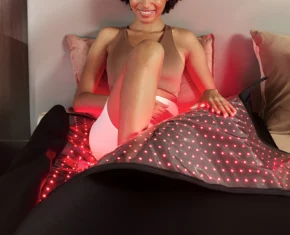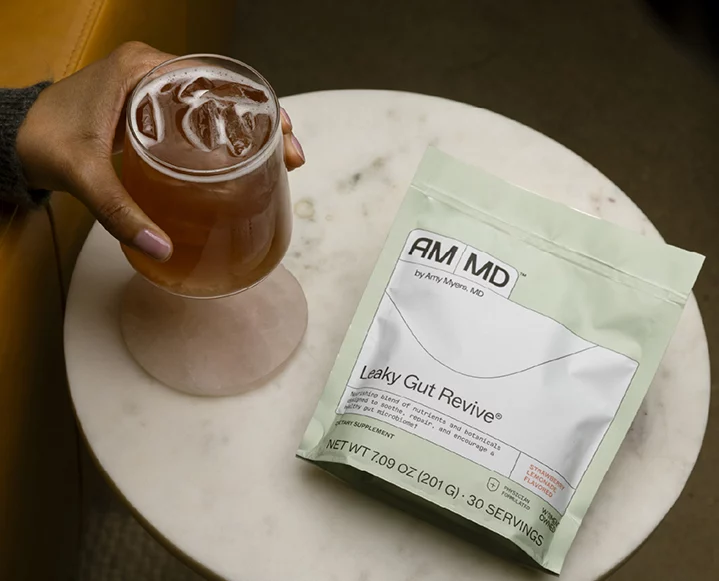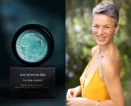Sensuality, Spirituality, and sustainability are the heart of AWAVEAWAKE, an eco-friendly fashion brand inspired by its founder’s personal spiritual journey. Created by former fashion stylist, Jaclyn Hodes, these beautiful plant-dyed silk dresses are beloved by modern wellness women and Rihanna alike.
From its conception to the clothing itself, the brand “captures the sensation of awakening consciousness that was gaining momentum when I first began conceptualizing the brand in 2011,” Jaclyn shares. At the time, eco-clothing had a connotation of neutral and bland. Jaclyn’s clothes are far from that — each flowy dress feels like a second skin, and is colored by plants with healing properties.
Jaclyn’s idea for an earth-conscious sustainable clothing line that would use natural fabrics and dyes grew from a week-long Kundalini Yoga retreat in the desert. Crafted to be both a form of self-expression and an opportunity to turn getting dressed into a mindful daily experience, it’s obvious why all the wellness it-girls are all about the brand.
From it’s spiritual underpinnings to its meaningful production process, Jaclyn is sharing her journey withAWAVEAWAKE below…
What does the name AWAVEAWAKE mean?
When I was searching for the name for this project I felt it needed to have a visual resonance as well as be open to various interpretations. This way the name might allow an openness for evolution. One of the inherent meanings was a reference to nature and the human imprint on it, specifically water and the power it contains — a natural wave verses a wake (the way a boat or other object creates waves) and the complex relationship between the two. It also captures the sensation of awakening consciousness that was gaining momentum when I first began conceptualizing the brand in 2011.
How was the brand born? How were you hoping to awaken people?
I was working in the fashion industry as a stylist and had done graduate work in fashion studies for a total of over 12 years when I launched the brand. I had, in the years leading up to the inception of the brand, begun to feel the importance of weaving my interests in spirituality and health with my work, and also not compartmentalizing my work from my other interests.
Additionally, I wanted to wear clothing that reflected this weave of integration in my life but it just didn’t exist. I couldn’t find any brands that exclusively used plant dyes and no brand’s overall vibe spoke to me stylistically.
I was also looking for some luxurious basics that wouldn’t fall apart as my vintage silks would — they literally biodegrade after 50+ years, which is actually a comforting thought. Seven years ago eco-clothing had a connotation of neutral-colored hemp and definitely was not synonymous with sensuality and style.
I didn’t know it from the onset, but the plant dyes would become such a big part of Awave Awake and lead me further on this path. I never intended to lead with the organic plant-based, sustainable message, rather the overall look. Especially when it was picked up by Vogue and Rihanna in the early days. But moving forward I need talk about the plants and their healing properties. It’s time for their voice.
What have you learned in your sustainable sourcing journey?
I started out seeking alternatives to conventional silk and ended up returning to it. I really love to honor the rich history and finery of the material. Peace/ahimsa silk is an incredible idea but has a rougher linen-like texture and drape. I have tried organic cotton knits, hemps, various silk and cotton blends but silk and botanical dyes really coexist best together. The material soaks up the color and the plant material alchemizes the silks. Not only do they soften the sheen of a satin finish silk but they also saturate the material with yards of healing plant properties.
When vibrant color is natural and coming from the earth there is something so different about it. There is literally a different vibration or frequency that’s emitted, a pure color wave that has its own healing effect as much as the potential healing prosperities of the plant medicine themselves. Whatever angle you take, it’s just one that is extra special and beyond compare.
Can you give any examples of plant dyes and their properties used in the clothing functionally or energetically?
We started out using plant extracts that certain suppliers provided from all around the world — we could be using a French flower, a South American bark and Cochineal from Mexico. But we’ve been working with artisans who hand dye the material in Indonesia using locally-grown material the past few years.
One of the most popular plant dyes that really gets a lot of attention, and for good reason, is indigo. The brilliant blue is the big anti-viral, anti-fungal antiseptic, and because of this has been know to have protective qualities throughout culture — the color has been used to ward off the evil eye. Color psychologically is thought to soothe and calm the perceiver, and in different cultures throughout Africa and Asia the cloth was used symbolically in rituals of dress and adornment.
Another plant dye used in Bali, that is also grown locally on the island, is mango leaf. The mango leaf is used to off white our silks, create an array of yellow hues and add to the indigo to create various shades of green. The mango leaf is used in Eastern traditional medicine internally to lower blood pressure and regulate diabetes and is beneficial for respiratory and gastrointestinal issues. It can also be used externally to heal burns when applied to the skin and decrease restlessness when added to the bath.
Turmeric is another magical root that yields a rich yellow but unfortunately has high rate of fading — not ideal for our market. But when we added it to a dye bath while experimenting with backyard natural dye, we found it can be added to other colors for an added boost of anti-inflammatory. Most everyone knows about this superfood’s healing properties.
There’s also sappan wood that makes wonderful pink tones. It’s said to be good for skin infections, as a postpartum tonic and for anemia and stomach disorders.
There’s a branch of Ayurvedic science that advocates wearing medicinal plant-soaked materials called Ayurvastra, and in Eastern cultures this is still practiced.
You said the brand "seems more aligned with the world of natural beauty and wellness than any place I could identify in fashion." Tell us more.
Because of the use of plant dyes and natural materials, the message is more than ethical and sustainable — it’s also about holistic and healthful practices. If we were as aware of the amount of harmful chemicals employed in the production of the clothing and accessory industries we would begin to consider how it might effect our health over time — our skin is our largest organ and what we put on skin is important. Breathable natural materials further amplified by natural color are the most health promoting garments one could wear. Additionally, one can explore the subtle, if not more obvious, medicinal properties of the plants that go into the colors.
What is your wellness philosophy?
Nourish the outer and inner as one. Sensuality is a healing tool of reconnection and is innately connected to our relationship to nature as well. Tune into color, form and the ritual of dress as much as you might the other rituals in your life.
Do you have any favorite pieces from your collections? What do you wear every day?
A slip dress is an essential wardrobe piece for me — I wear one nearly every day. If I’m not wearing one as is, I’ll treat it as a base layer or second skin worn under another dress if I’m craving wearing a vintage patterned piece. It’s often the first layer between my skin and anything else.
The two-tie blouse is another one that I wear alternately over a slip with jeans or a skirt. It can be worn as a wrap top or fastened in a more open way. The two ties at the waist offer many styling possibilities.
What are your wellness tips for women who want to live more sustainably?
I would say that women should embrace whatever that is that makes them feel good. Simplify for peace of mind, and this alone can help anyone live more sustainably. If you use daily dressing as a more conscious ritual, perhaps see it as essential to self-care, a meditation practice or making a daily superfood tonic, then your way of consuming would drastically shift.
If you are ritualizing the daily practice of dressing more consciously then you are likely tuning into the colors and the materials as much as the silhouette and style and how they might serve you that day. Comfort is not only about how the material feels against your skin but also how well the look accentuates the mood or state of being you want to achieve.
It's an interesting time for women and our sense of physicality. How do you feel AA serves women?
Woman have told me that wearing the silk feels like an armor, ironically because of the supple unlined silhouettes that contour the body. Perhaps it’s the kind of armor we need now, connecting the dual authentic nature of femininity, which to me is both fierce and soft, and sometimes inhabiting both states at once.
The clothing mirrors that sensibility, the fluid plant-dyed silks give the wearer a strength. It comes from the near transparency of a garment, and one that allows you to feel vulnerable, even connected to your essence perhaps, and in turn you feel protected. We want to share more about the plant properties and that might further lend more to the wearer understanding why the feel is so good and strong when wearing the slip dress.











